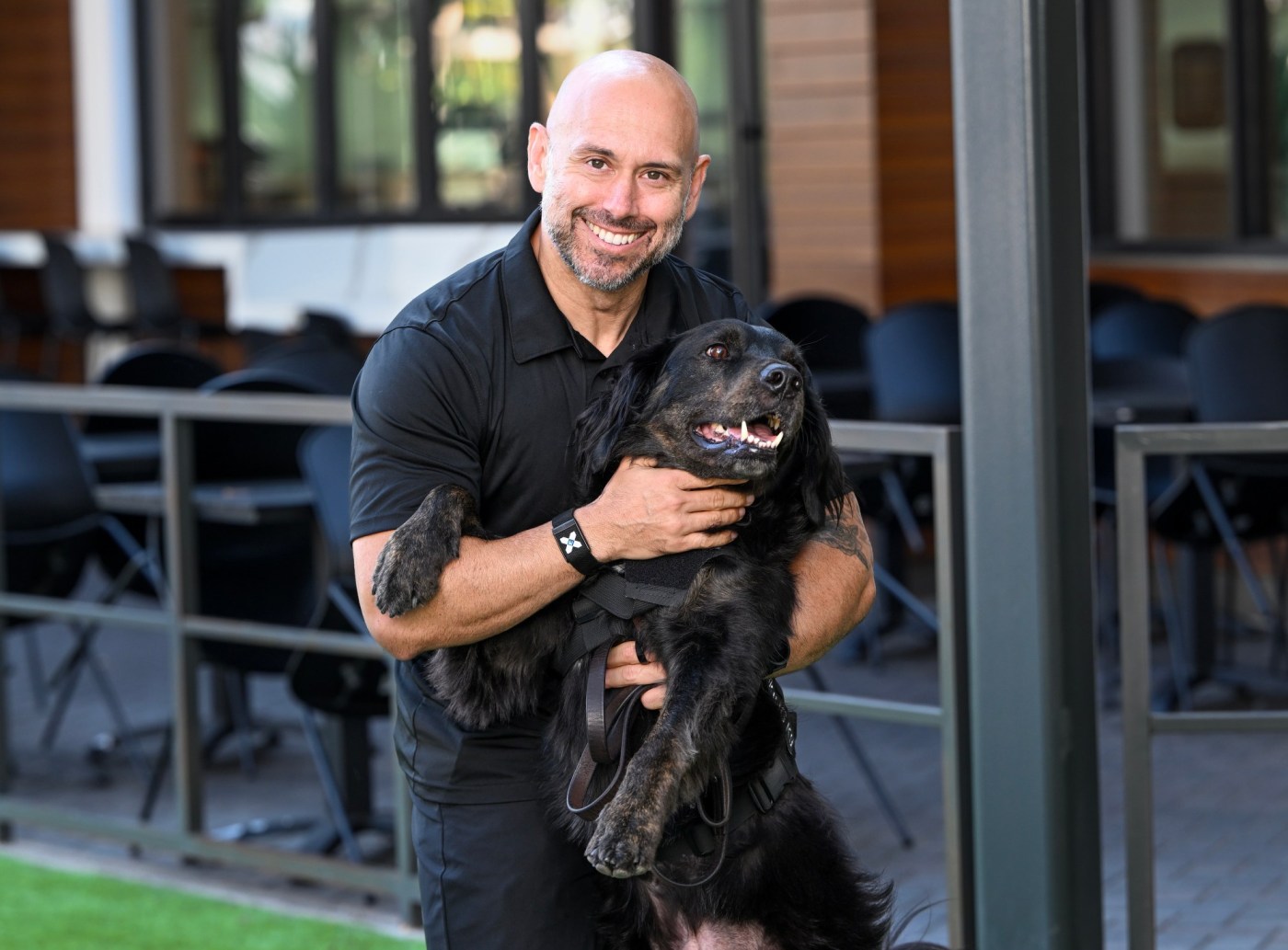Veterans are increasingly turning to service dogs as a vital resource in their fight against Post-Traumatic Stress Disorder (PTSD). For many, these dogs are more than companions; they are lifelines that help them navigate the challenges of civilian life after military service.
Joe Moreno, a Navy veteran, experienced a profound moment of clarity when he found himself panicking in a mall parking lot. This incident transported him back to his deployment during the 2003 invasion of Iraq, prompting him to seek help for his longstanding anxiety. After years of masking his distress, Moreno was finally diagnosed with PTSD in 2024 and paired with a service dog named Eagle.
“I was in a civilian world that I didn’t understand and that didn’t understand me,” Moreno said, reflecting on his struggles since leaving the military in 2016. While he had attempted to cope through physically demanding activities like Ironman competitions and mountain climbing, his internal turmoil persisted. The turning point came when he reached out to the Veterans Administration for assistance.
Now, with Eagle by his side, Moreno reports that his good days outnumber the bad. “Before Eagle, PTSD had me in survival mode 24/7 just trying to get through another day,” he explained. “Eagle gave me my life back.” The service dog not only helps Moreno feel secure in public spaces but also brings him a renewed sense of purpose.
The statistics surrounding veterans and PTSD are alarming. According to the Veterans Administration, out of approximately 5.8 million veterans served in fiscal year 2024, about 14% of men and 24% of women have been diagnosed with PTSD. Tragically, an average of 20 veterans take their own lives daily, highlighting the urgent need for effective interventions.
Service dogs have been shown to significantly reduce symptoms of PTSD and suicidal ideation. In recent years, numerous nonprofit organizations have emerged, supported by federal grants, to train and pair service dogs with veterans. Some programs even teach veterans to train their own dogs, fostering a unique bond from the start.
Despite the growing interest in service dogs, many organizations report long waitlists. The cost of raising and training these animals can reach up to $25,000, often making it challenging for nonprofits to keep the programs accessible for veterans. These service dogs are trained not only for PTSD but also to assist with mobility issues, guide those who are blind, and provide support to individuals with hearing impairments.
Moreno’s journey with Eagle began at K9s For Warriors, the largest rescue-to-service dog program in the United States. After being surrendered as a puppy, Eagle underwent eight months of training before being matched with Moreno. The connection was immediate, and Moreno describes the moment they met as “super emotional.”
The mission of K9s For Warriors is to empower veterans to regain their independence and purpose. Moreno noted that Eagle’s ability to sense his anxiety and bring him back to the present moment is invaluable. “It’s like that person that was standing on my chest has moved on, and I could finally breathe again,” he said.
Research supports the positive impact of service dogs on veterans with PTSD. In a recent study conducted by psychologist Maggie O’Haire at the University of Arizona, veterans with service dogs were found to have a 66% lower likelihood of maintaining a clinical PTSD diagnosis compared to those without. The study involved 156 veterans nationwide and highlighted improvements in anxiety, depression, and social isolation among those paired with service dogs.
O’Haire emphasized the importance of translating veterans’ experiences into actionable data for doctors and policymakers. “We’re really excited to share the strongest evidence to date supporting service dog partnership for veterans with PTSD,” she stated.
The commitment to enhancing veterans’ mental health continues with ongoing studies, including randomized trials examining how veterans with service dogs fare in completing clinical therapies. O’Haire aims to demonstrate that service dogs can complement traditional treatments, ultimately improving overall outcomes for veterans.
Eddie Montoya, a councilman in Rialto and a veteran of the Army, shares a similar story. After a 17-year career marred by PTSD, Montoya found hope and purpose through his service dog, Sly. Following his wife’s suggestion, he joined a program at Working Dogs for Warriors, where veterans train their own dogs.
Montoya’s transformation has been profound. “It used to be the only way I could go into public was being drunk,” he said. Now, he actively helps other veterans and has even started his own nonprofit, the Brotherhood Bridge Foundation, which aims to support veterans across Southern California and beyond.
Montoya believes that his service dog has played a crucial role in his recovery. “I give it all to my dog; it wouldn’t have happened without my dog giving me purpose,” he stated. His newfound confidence has led him to a seat on the Rialto City Council, where he advocates for effective legislation supporting veterans and their service dogs.
As more veterans like Moreno and Montoya find solace and strength through their service dogs, the impact of these programs continues to grow. With ongoing research and community support, the hope is that even more veterans will gain the tools needed to overcome the silent battles they face after returning home.







